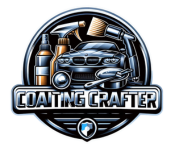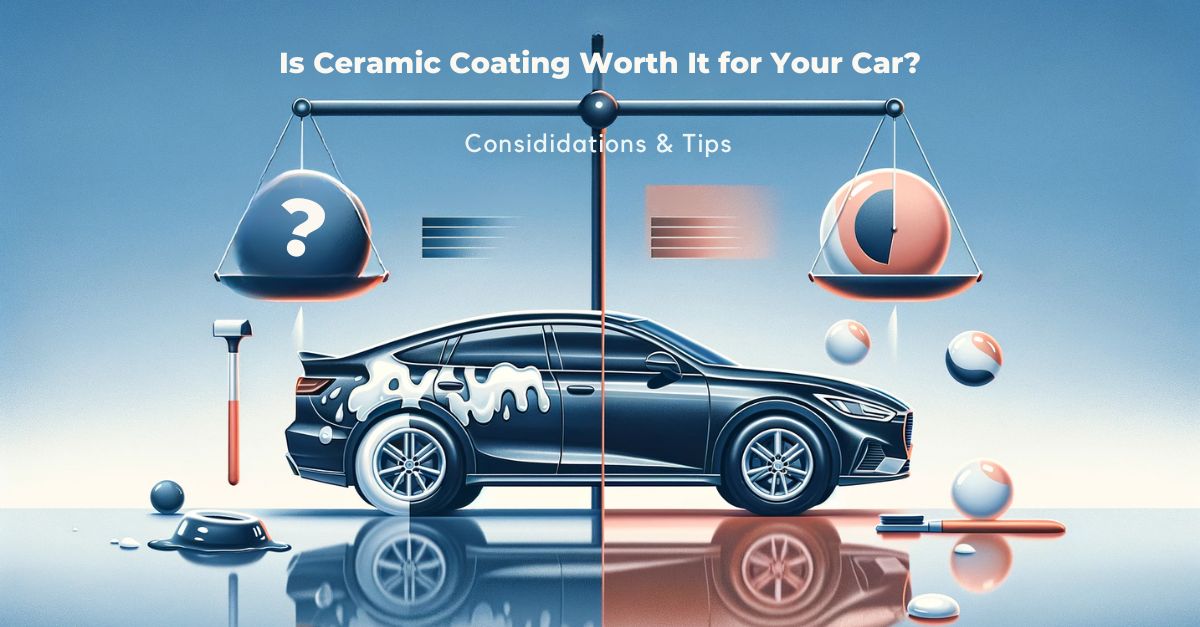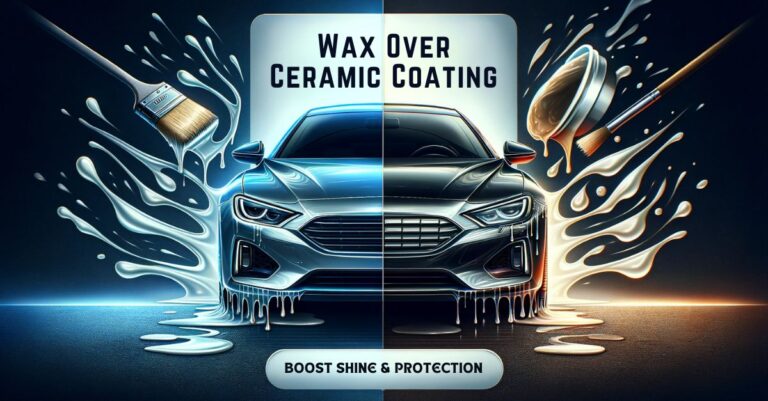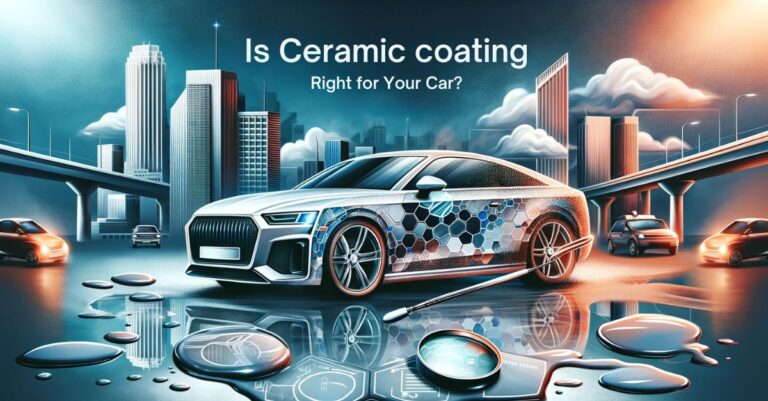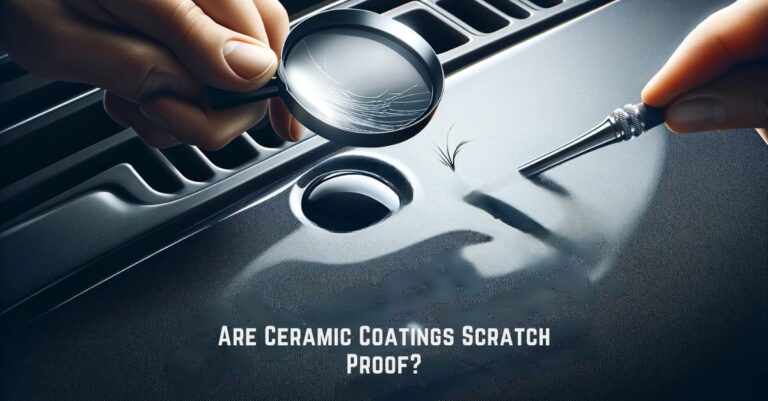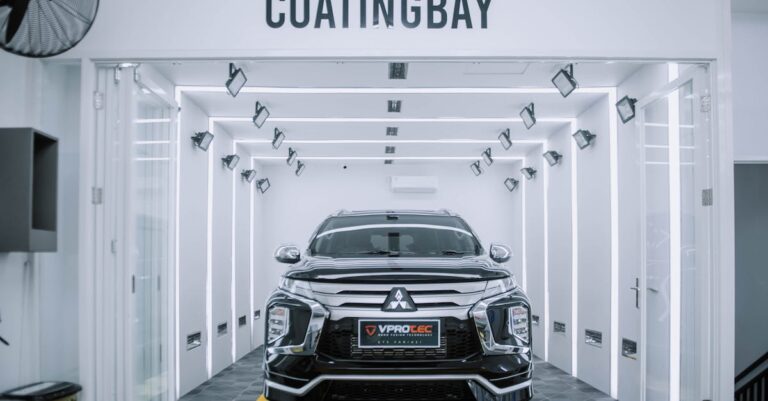Is Ceramic Coating Worth It for Your Car? Considerations & Tips
We’ve all been there, admiring the gleaming finish on a brand new car and wondering how we can keep ours looking just as impressive. Ceramic coating might just be the answer you’re looking for. It’s the latest trend in automotive care, promising to protect your car’s paint while keeping it looking showroom fresh.
But is it worth the investment? We’re here to dive into the pros and cons of ceramic coating your car. From durability to cost, we’ll help you decide if this high-tech solution is the right choice for your beloved ride. Stay tuned as we explore the ins and outs of ceramic coatings and whether they live up to the hype.
The Benefits of Ceramic Coating
When exploring the world of automotive protection, we’ll find that ceramic coatings offer a myriad of advantages. One of the primary benefits is the unmatched level of protection they provide.
- Unparalleled Gloss and Shine
- Superior Protection from the Elements
- Ease of Cleaning
The surface of a ceramic-coated car is remarkably hydrophobic. This means water and other liquids will bead up and slide off more easily, which helps in keeping the car clean as dirt and grime cannot adhere as readily. In addition, the slickness of the coated surface makes it much simpler to wash away any contaminants.
Durability is another powerful draw for ceramic coatings. Traditional wax treatments wear off in a matter of months, but ceramic coating maintains its protective qualities for years. After application, it forms a strong chemical bond with the paint, providing a long-lasting layer that doesn’t wash away with rain or degrade swiftly due to UV rays.
Our cars encounter various harmful contaminants on the road. A quality ceramic coating can shield a vehicle’s paint from bird droppings, tree sap, and even scratches to a certain degree. By acting as a sacrificial layer, it takes the hit, thereby preserving the integrity of the paint beneath.
Investing in a ceramic coating often means a vehicle retains its aesthetic appeal longer. The impressive gloss that comes immediately after application is not just for looks; it’s indicative of the coating’s ability to repel environmental pollutants that can make paint appear dull and faded over time.
Lastly, ceramic coatings can also add to the resale value of our cars. A well-maintained coating signals to potential buyers that the car has been meticulously cared for and protected from common wear and tear, which could lead to a better selling price.
With these significant benefits, it’s easy to see why so many car enthusiasts and everyday drivers alike are drawn to ceramic coating as a method of protecting their investment and keeping their vehicle looking its best.
Remember to evaluate each benefit against your specific needs and usage to decide if ceramic coating aligns with your car maintenance goals.
How Does Ceramic Coating Work?
When we delve into the workings of ceramic coating, it’s essential to understand what it essentially is — a liquid polymer that chemically bonds with the vehicle’s factory paint, creating a layer of protection. Unlike a wax or sealant that would merely sit on top of the vehicle’s surface, ceramic coatings actually bond with the paint on a molecular level. This creates a semi-permanent shield that does not wash away or break down over time.
The coating’s ability to merge with the car’s paint results in a number of impressive advantages. For instance, ceramic coatings provide a layer that’s resistant to chemicals, UV exposure, and even light scratches. What’s truly remarkable about this technology is its hydrophobic properties, meaning it repels water. Once applied, water beads on the surface and slides off with ease, reducing the likelihood of water spots and etching from minerals.
We should also consider the actual application process, which involves thorough cleaning and decontamination of the vehicle’s surface. This prep work is crucial as it ensures that the coating adheres properly and lasts longer. The ceramic coating is then applied and cured, forming a transparent and hard surface over the paint.
| Benefit | Description |
|---|---|
| Chemical Resistance | Guards against acidic contaminants. |
| UV Resistance | Prevents oxidation and fading. |
| Scratch Resistance | Mitigates damage from minor abrasions. |
| Hydrophobic Properties | Facilitates easy cleaning and maintenance. |
| Durability | Maintains properties for years post-application. |
In practical terms, once a car is ceramic coated, maintenance becomes less of a headache. We’ll find that contaminants such as bird droppings and tree sap won’t stick to the surface as they used to, and our vehicle maintains that just-waxed look for much longer periods. It’s all thanks to the innovative blend of materials that comprise the ceramic coating, which offer a steadfast solution against common adversities faced by car exteriors.
Durability of Ceramic Coatings
When considering whether to ceramic coat your car, understanding durability is crucial. Ceramic coatings are renowned for their long-lasting protection, typically outlasting traditional wax by years. The lifespan of a ceramic coating can range from one to five years, depending on the quality of the product and the conditions to which your vehicle is exposed. For superior grades, professional application could extend this lifespan even further, potentially up to a decade under optimal conditions.
A major factor contributing to the durability of ceramic coatings is their resilience against harsh elements. Unlike wax, ceramic coatings withstand intense heat and cold, providing reliable protection in a variety of climates. What’s more, the bond created between the coating and your car’s paint is strong enough to withstand daily wear such as:
- UV rays
- Acid rain
- Road salt
- Bird droppings
- Tree sap
This means not only will your car look better for longer, but it’s also better shielded from the environmental variables that lead to oxidation and paint fading.
Of course, some maintenance is still necessary to retain the coating’s optimal performance. Regular washing with a pH-neutral shampoo will help maintain its hydrophobic properties and sheen. However, you’ll notice that contamination washes off with less effort than before. Additionally, avoiding abrasive cleaning tools and harsh chemicals is essential to preserve the coating’s integrity.
To put things into perspective, here’s a comparison with traditional wax:
| Protection Type | Durability |
|---|---|
| Traditional Car Wax | 1-4 Months |
| Ceramic Coating | 2-5 Years |
Overall, choosing a ceramic coating is an investment in the longevity of your car’s exterior. It provides advanced protection from various damaging elements, making it a wise choice for those looking to preserve their vehicle’s appearance and reduce the need for frequent detailing.
Protection from UV Damage
When considering whether to ceramic coat your car, understanding the level of UV protection it offers is crucial. We know that UV rays are harmful not only to our skin but also to our cars’ paintwork. Over time, exposure to sunlight can cause the paint to fade, oxidize, or even crack, leading to a less vibrant appearance and diminished resale value.
Ceramic coating steps in as a stalwart defender against these rays. The nanoparticles within the ceramic coat form a Shielding Layer above your car’s paint. This layer is resistant to UV radiation, reflecting it away from the vehicle’s surface. By doing so, the coating helps preserve the gloss and color integrity of the car’s exterior. Just think of it as sunscreen for your car but without the need for daily reapplication.
Maintaining that fresh-from-the-showroom glow is something all car owners value, and ceramic coating provides that extra level of insurance. For example, after a year of direct sunlight exposure, an untreated car may show signs of dullness and discoloration. On the contrary, a ceramic-coated car often maintains much of its luster and hue.
Here are a few key benefits of UV protection provided by ceramic coatings:
- Prevents Paint Fading: The sun’s rays can be relentless, but the ceramic coating keeps your car’s paint from fading.
- Oxidation Resistance: Oxidation leads to a dull and weathered look. Ceramic coatings guard against this deterioration.
- Enhanced Durability: Your car’s exterior will last longer with the protection from a ceramic coat, putting off the need for a new paint job.
It’s also worth noting that while ceramic coating is remarkable at preserving your car’s appearance, it doesn’t negate the need for regular maintenance. Occasional washing and keeping the vehicle away from extreme conditions when possible will maximize the effectiveness of the ceramic coat’s UV protection.
Resistant to Chemical Stains and Etching
One of the most compelling reasons to consider ceramic coating for your car is its high resistance to chemical stains and etching. We can’t overstate the importance of protecting a vehicle’s exterior from acidic contaminants that we encounter daily. Bird droppings, tree sap, and even acid rain can inflict severe damage on a car’s paint job if not promptly removed.
Ceramic coatings come to the rescue by offering a chemically resistant surface that these corrosive materials can’t easily penetrate. The coating creates a barrier much stronger than wax or sealants, reducing the likelihood that these substances will leave a permanent mark. The hydrophobic nature of ceramic coatings also means that water-based contaminants are more likely to bead on the surface and slide off, rather than eat into the paint.
We must emphasize that while ceramic coatings are powerful, they’re not impenetrable. Regular cleaning is essential to prevent any chemical etching from taking hold. This doesn’t undermine the effectiveness of the coating; it simply highlights the need for ongoing care for optimal protection.
When considering the cost-to-benefit ratio, the longevity and effectiveness of ceramic coatings against chemical damage make them a worthwhile investment. Our vehicles are subjected to a harsh environment every time we hit the road, and there’s a constant barrage of potentially damaging substances. Here’s where ceramic coatings shine, literally and figuratively—they keep our cars looking immaculate with their enduring protective qualities.
To keep this protection at peak performance, we advise a simple routine maintenance wash to remove any contaminants that could compromise the coating’s integrity. By staying diligent with these washes, we ensure the longevity of the ceramic coating’s protective features, keeping our cars pristine for years to come.
Maintenance and Cleaning
When it comes to maintaining your car’s ceramic coating, the process is surprisingly straightforward, yet it requires diligent care to ensure the longevity of the protective layer. Our experience tells us that, to get the most out of ceramic coatings, we’ve got to stick to a regular cleaning schedule. Dirt, grime, and contaminants can still adhere to the surface, but the good news is they’re much easier to remove than from a traditional waxed surface.
Decontamination of the paint should be performed every few months to prevent buildup that can compromise the integrity of the ceramic coating. A simple soap and water solution will work wonders most of the time. However, we’ll want to avoid harsh detergents that can degrade the coating prematurely. Instead, opting for pH-neutral car shampoos will do the job effectively without harming the ceramic layer.
Here’s what we should do for optimal maintenance:
- Wash the vehicle every two weeks using a two-bucket method to minimize scratching.
- Apply a top-up product engineered for ceramic coatings every few months to rejuvenate the hydrophobic properties.
- Use only soft, microfiber towels when drying the car to prevent swirl marks.
It’s also worth mentioning that touchless car washes are preferable over traditional ones. The lack of physical contact reduces the risk of micro-marring. And when it comes to drying, it’s best to let the car air dry or use a leaf blower to avoid any potential micro scratches from towels, even when they’re microfiber.
Annual inspections by a professional detailer can help diagnose any areas that might need attention and ensure the coating performs at its peak. These specialists have the tools and expertise to spot problem areas that we might overlook. They can also provide a more thorough decontamination and apply a ceramic boost spray that refreshes the coating’s attributes.
Cost of Ceramic Coating
When considering whether ceramic coating is right for your vehicle, one of the foremost considerations is cost. The expense of applying a ceramic coating can vary dramatically, based on several factors including the size of the vehicle, the condition of its paint, the brand of the coating, and the reputation of the detailing shop.
Typically, for a standard car, you’re looking at a range that can start from $500 and go up to $2,000 or more for premium coatings offered by top-tier professionals. It’s vital to understand that this isn’t a recurring fee but rather an investment in your vehicle’s protection that could pay dividends in retaining its value.
Here’s a quick breakdown of factors influencing the cost:
- Size of the Vehicle: Larger vehicles require more material and labor.
- Quality of Coating: High-end coatings with longer warranties cost more.
- Preparation Work Needed: Pre-coating paint correction adds to the total cost.
- Professional Application: Skilled technicians may charge a premium for their expertise.
| Factor | Typical Impact on Cost |
|---|---|
| Vehicle Size | Higher for larger vehicles |
| Coating Quality | Premium coatings cost more |
| Paint Condition | Pre-coating work increases cost |
| Detailer’s Expertise | Reputable detailers may charge more |
Remember that a ceramic coating is not merely an aesthetic enhancement. It’s a robust barrier against various forms of damage including UV rays, chemical stains, and light scratches. In essence, you’re not just paying for a product, but for the longevity it provides to your car’s finish.
We believe it’s always a good idea to seek quotes from a few different professionals to weigh your options. Ensure they outline exactly what’s included in their package so you can make an informed decision. Keep in mind that a lower price might not always mean a less effective product, but it could indicate a thinner coating or reduced longevity, which could affect the long-term outlook of your investment.
DIY vs Professional Application
When debating whether to apply a ceramic coat on our cars by ourselves or to seek professional assistance, we must weigh the pros and cons of both options. DIY kits are readily available on the market and promise a straightforward application process. But we need to ask ourselves, do we have the right tools and environment for the job? The effectiveness of a DIY ceramic coating heavily depends on our application skill and the quality of the product selected.
The Benefits of Professional Application include:
- Professional Expertise: Technicians with years of experience know exactly how to prepare and apply the coating to ensure optimal durability and protection.
- Quality Guarantee: Professionals often offer warranties for their work, ensuring peace of mind.
- Advanced Products: Detailers have access to professional-grade products not available to the public.
On the flip side, a DIY approach might initially appear to be more cost-effective and gives us a sense of personal accomplishment. However, without the proper skills, we risk doing a subpar job that can result in an uneven finish or less than ideal protection.
| Factor | DIY Application | Professional Application |
|---|---|---|
| Cost | Less expensive | More expensive |
| Skill Level Required | High | Managed by professionals |
| Time Investment | Significant | Depends on provider |
| Quality of Outcome | Variable | Consistently high |
| Longevity | Typically lower | Often longer due to better application |
Ultimately, the decision between DIY and professional ceramic coating application hinges on our valuation of time, our confidence in our ability to perform the task, and whether we’re willing to gamble on the longevity and effectiveness of our work compared to that of seasoned professionals. It’s important to consider the long-term implications of our choice—both for our car’s appearance and its protection.
Is Ceramic Coating Right for You?
Deciding to ceramic coat your car is an important choice that requires assessing your individual needs and lifestyle. Consider the climate and environment you live in; areas with intense sunshine, acid rain, or salty sea air can wreak havoc on a car’s paint job. If you often find yourself driving in harsh conditions or are concerned about maintaining the pristine condition of your vehicle, ceramic coating might be a perfect match. It’s also about considering the longevity of your paint’s protection.
For car enthusiasts and those who see their vehicle as an investment, the added value a ceramic coating provides could make it worth the upfront costs. The ceramic layer acts as a shield against various forms of damage, including UV rays, contaminants, and light scratches. However, for those who use their car purely for functionality and don’t mind a bit of wear and tear, the investment might not be justifiable.
Budget is another critical aspect. While the cost of a ceramic coating might seem steep, it’s valuable to consider the frequency of traditional waxing or sealant application. If you’re used to taking your car for a wax every few months, your expenses over time could equate to, or even exceed, the one-time cost of ceramic coating—and with ceramic coating, you won’t have to wax your car.
There are also self-cleaning properties to consider: the slick nature of a ceramic-coated surface can make cleaning your car a much less daunting task, potentially saving time and effort that goes into regular maintenance.
So, here are a few questions to ask yourself before making the decision:
- How critical is the aesthetic appeal of my car to me?
- Will the environmental conditions I live in likely damage my car’s paint?
- Is my budget aligned with the investment in ceramic coating?
- Do I have time and resources for the ongoing maintenance of my car’s exterior?
Balancing these factors will help guide you toward the right decision for your vehicle. Remember that every car and every owner’s situation is unique. Thorough research and a clear understanding of your preferences will pave the way for the best choice regarding your car’s care.
Conclusion
We’ve explored the essential factors to consider before deciding on ceramic coating for your car. It’s clear that understanding your needs, environment, and budget plays a critical role in this choice. Ceramic coating offers remarkable benefits like long-term protection and reduced maintenance, but it’s crucial to weigh these against the initial investment. We encourage you to reflect on the questions provided and do your homework to ensure you’re making the most informed decision for your vehicle. Remember, it’s not just about the shine—it’s about preserving your car’s beauty and value for years to come.
